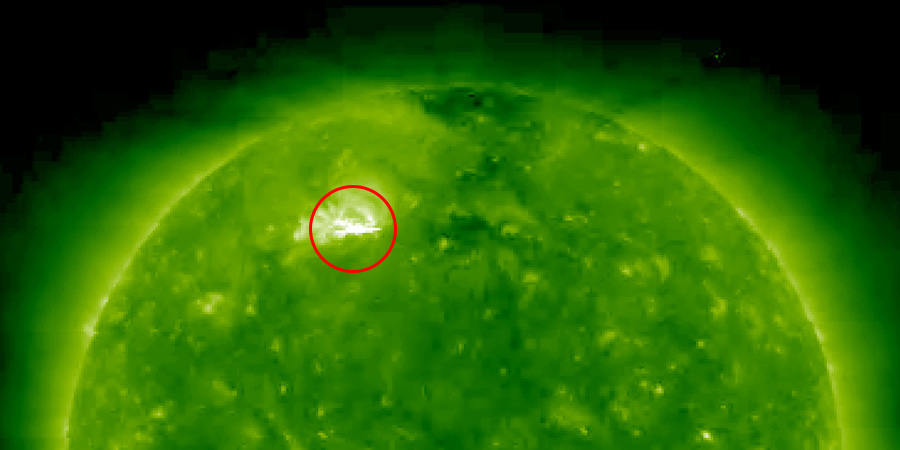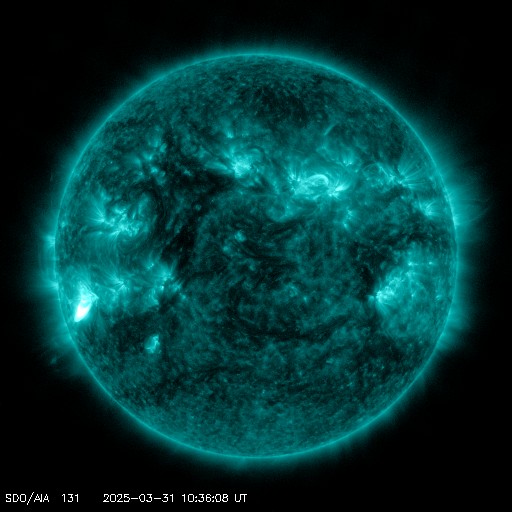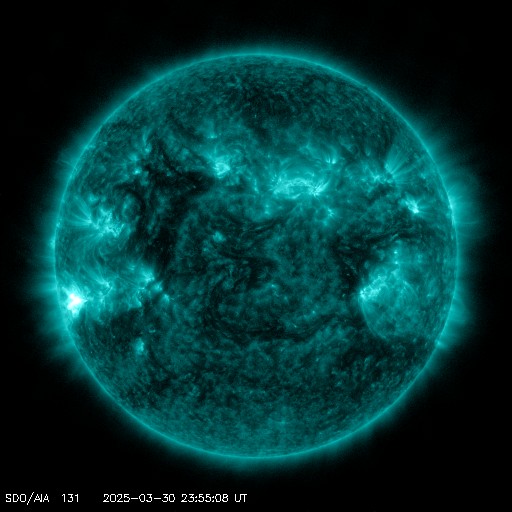First M-class solar flare of a Solar Cycle 25 region!
Friday, 29 May 2020 12:01 UTC

925 days. That is the amount of time we had to wait since we last saw a M-class solar flare on the Sun. But today the wait is over. An impulsive M1.19 solar flare (minor R1 radio blackout) took place on our Sun this morning peaking at 07:24 UTC. NASA's Solar Dynamics Observatory seems to have taken a break from its sun-watching duty for some reason but STEREO Ahead captured the impulsive eruption confirming it comes from a sunspot region near the east limb from Earth's point of view. This sunspot region very likely belongs to Solar Cycle 25 due to its high latitude and it could even be the first M-class solar flare of Solar Cycle 25 depending on if we have passed solar minimum or not.
The M1.1 solar flare (R1) that peaked today at 07:24 UTC is the first M-class flare of a sunspot region that belongs to Solar Cycle 25 and the first M-class flare in 925 days! The flare took place at the east limb from Earth's point of view and produced a nice coronal wave. pic.twitter.com/gOcBpgDQRY
— SpaceWeatherLive (@_SpaceWeather_) May 29, 2020
The solar flare was of a very short duration (which we call an impulsive event) but did produce a nice little coronal wave as you can see on the images made by STEREO Ahead featured in the tweet above. A small coronal mass ejection became visible on the SOHO/LASCO coronagraph following the M-class event but due to the location of the eruption, it is of course not aimed at Earth.
This M-class solar flares was followed by a near M-class event at 10:46 UTC peaking at C9.3. Interesting times and possibly a historic moment if this indeed is the first M-class event of the new Solar Cycle.
Thank you for reading this article! Did you have any trouble with the technical terms used in this article? Our help section is the place to be where you can find in-depth articles, a FAQ and a list with common abbreviations. Still puzzled? Just post on our forum where we will help you the best we can!
Current data suggests there is a slight possibility for aurora to appear at the following high latitude regions in the near future
Norilsk, VorkutaLatest news
Latest forum messages
More topicsSupport SpaceWeatherLive.com!
A lot of people come to SpaceWeatherLive to follow the Sun's activity or if there is aurora to be seen, but with more traffic comes higher server costs. Consider a donation if you enjoy SpaceWeatherLive so we can keep the website online!

Latest alerts
11:15 UTC - Solar protons
Minor S1 Solar Radiation Storm - Minor impacts on HF radio through polar regions
10:45 UTC - Solar flare
Moderate M1.26 flare
10:27 UTC - Radio Blackout
Minor R1 radio blackout in progress (≥M1 - current: M1.22)
00:09 UTC - Solar flare
Moderate M1.03 flare
Sunday, 30 March 2025
23:51 UTC - Radio Blackout
Minor R1 radio blackout in progress (≥M1 - current: M1.03)
Space weather facts
| Last X-flare | 2025/03/28 | X1.1 |
| Last M-flare | 2025/03/31 | M1.2 |
| Last geomagnetic storm | 2025/03/27 | Kp5 (G1) |
| Spotless days | |
|---|---|
| Last spotless day | 2022/06/08 |
| Monthly mean Sunspot Number | |
|---|---|
| February 2025 | 154.6 +17.6 |
| March 2025 | 127 -27.6 |
| Last 30 days | 127 -25.7 |




